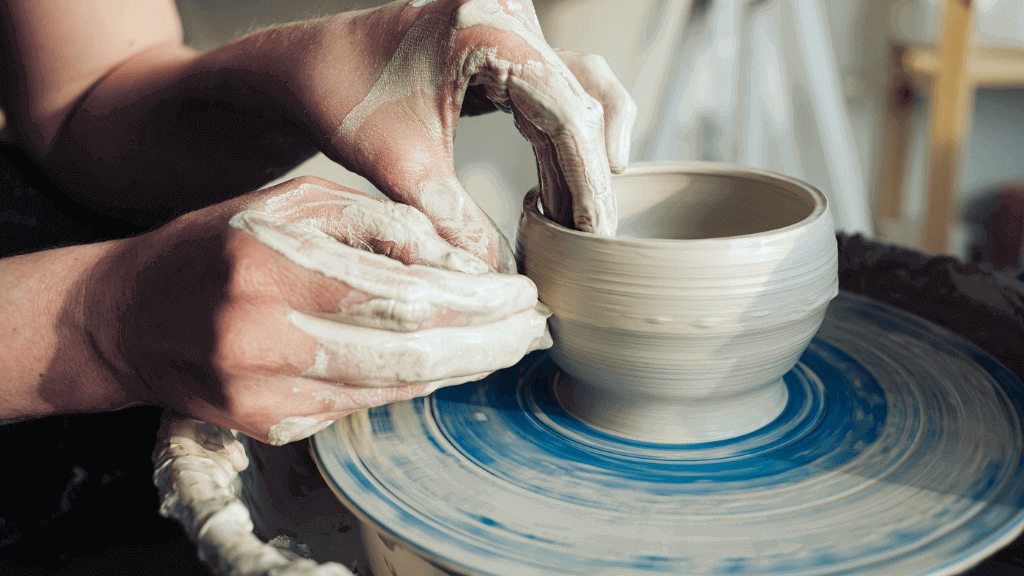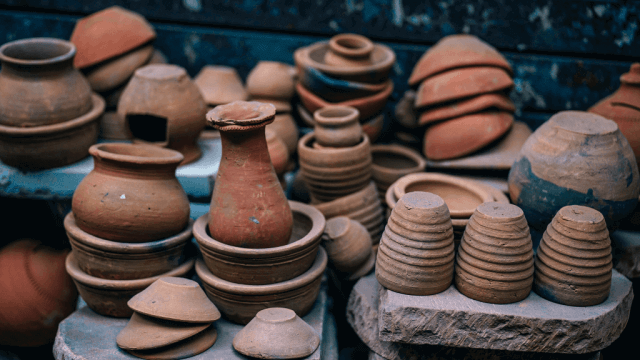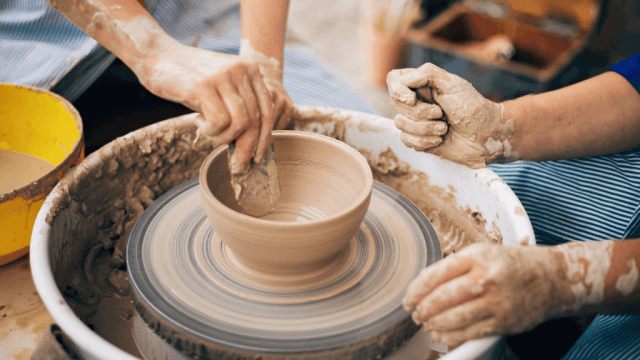Yes, clay from the ground can be used for pottery. However, it needs to be processed first. The clay will need to be sieved to remove unwanted material such as rocks, twigs, and roots. Sieving can be done either of two ways. The clay can be pulverized when dry and then sieved, or dried, slaked down in water, then sieved. There are also other methods for processing soil into clay for pottery.
What types of clay are best for pottery making?
There are several types of clay that are commonly used for pottery making. Porcelain and kaolin clays are considered the best clays available for making pottery, but they are also the most expensive. Other popular types of clay include earthenware, stoneware, and ball clay. Earthenware is a low-fire clay that is easy to work with and is often used for decorative pieces. Stoneware is a high-fire clay that is very durable and is often used for functional pottery such as dinnerware and mugs. Ball clay is a fine-grained clay that is often used as a filler in other types of clay.
How do you determine if the clay you’ve collected from the ground is suitable for pottery making?
There are several ways to determine if the clay you’ve collected from the ground is suitable for pottery making. One way is to look for a crackled texture when dry, which indicates a high clay content. Another way is to do practical tests in your own studio or workshop, such as the SHAB test, DFAC test, SIEV test, or LDW test. Once you have collected the clay, it will need to be processed by sieving out unwanted materials like rocks and twigs. You can also try doing a test jar by filling a jar halfway with soil and adding water to see how much clay it contains. Finally, you can mix the wild clay with water using a power drill with a paddle attachment until it becomes liquid.
Are there any additional steps or preparations needed before using clay from the ground for pottery?
Yes, there are additional steps and preparations needed before using clay from the ground for pottery. The clay will need to be processed by sieving out unwanted materials such as rocks, twigs, and roots. There are different methods of processing clay, including wet extraction , soaking and mixing it into a slurry , or wedging it to adjust water content and consistency while removing air. It is also recommended to find high-clay soils for better yield when making pottery at home.
Can clay from the ground be used for different types of pottery techniques, such as hand-building or wheel-throwing?
Yes, clay from the ground can be used for different types of pottery techniques, such as hand-building or wheel-throwing. There are five main types of clay for pottery: earthenware, stoneware, porcelain, ball clay, and fire clay. Earthenware is the most common type of clay used in hand-building , while stoneware and porcelain are more commonly used in wheel-throwing. Ball clay is often added to other clays to improve their plasticity.
Are there any potential risks or disadvantages to using clay from the ground for pottery making?
Yes, there are potential risks and disadvantages to using clay from the ground for pottery making. Inhalation of large amounts of free silica during clay mixing can lead to silicosis, a chronic lung disease with symptoms such as shortness of breath, dry cough, emphysema, and high susceptibility to lung infections. Poor lifting habits related to bags of clay, kiln shelves, etc. can also be hazardous. Additionally, clay scraps left behind and sanding-finished green ware may produce an inhalation hazard due to the presence of free silica.











